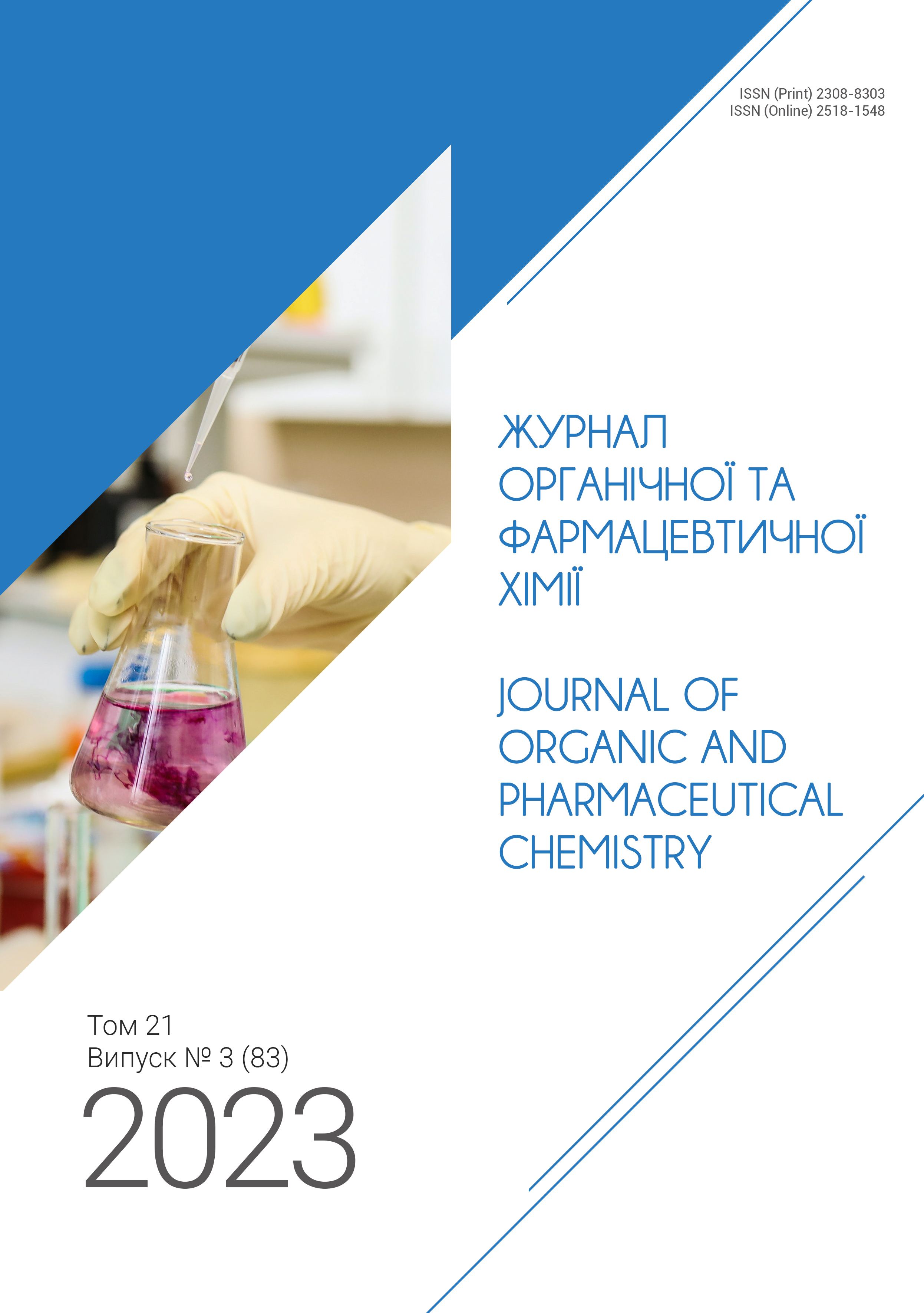Incorporation of gem-Difluorocycloalkyl Substituents into Heterocycles via the Levin’s “Nitrogen Deletion” Strategy
DOI:
https://doi.org/10.24959/ophcj.23.278321Keywords:
cycloalkanes, fluorine, Levin’s anomeric amide, “Nitrogen deletion”, reductive aminationAbstract
A series of compounds containing heterocyclic cores and gem-difluorocycloalkyl substituents was obtained under conditions of the parallel synthesis (i.e., simultaneous performance of reaction procedures, treatment of the reaction mixture, and product isolation for a number of similar transformations) using the reductive amination – the “Nitrogen deletion” reaction sequence. The synthesis of the target compounds commenced from heteroaromatic aldehydes and the corresponding gem-difluorocycloalkyl or (gem-difluorocycloalkyl)methyl amines and included the NaBH3CN-mediated reductive amination and “Nitrogen deletion” upon the action of Levin’s anomeric amide. It has been shown that the method can be used to obtain compounds with the aforementioned structural fragments separated by one or two methylene units. The developed protocol allowed for the preparation of a 12-member compound library (67 % synthetic efficiency). Therefore, this novel synthetic methodology is suitable for decorating heterocyclic cores with sp3-enriched substituents that are attractive for medicinal chemistry.
Supporting Agency
- The work was supported by Enamine Ltd., the Ministry of Education and Science of Ukraine (grants No. 0121U100387 (21BF037-01M) and 0122U001962 (22BF037-02)), and National Academy of Sciences of Ukraine (grant No. 0119U102718).
Downloads
References
- Gillis, E. P.; Eastman, K. J.; Hill, M. D.; Donnelly, D. J.; Meanwell, N. A. Applications of Fluorine in Medicinal Chemistry. J. Med. Chem. 2015, 58, 8315–8359. https://doi.org/10.1021/acs.jmedchem.5b00258.
 |
| 
- Mei, H.; Remete, A. M.; Zou, Y.; Moriwaki, H.; Fustero, S.; Kiss, L.; Soloshonok, V. A.; Han, J. Fluorine-Containing Drugs Approved by the FDA in 2019. Chinese Chem. Lett. 2020, 31, 2401–2413. https://doi.org/10.1016/j.cclet.2020.03.050.

- Yerien, D. E.; Bonesi, S.; Postigo, A. Fluorination Methods in Drug Discovery. Org. Biomol. Chem. 2016, 14, 8398–8427. https://doi.org/10.1039/C6OB00764C.
 |
| 
- Inoue, M.; Sumii, Y.; Shibata, N. Contribution of Organofluorine Compounds to Pharmaceuticals. ACS Omega 2020, 5, 10633–10640. https://doi.org/10.1021/acsomega.0c00830.
 |
| 
- Han, J.; Remete, A. M.; Dobson, L. S.; Kiss, L.; Izawa, K.; Moriwaki, H.; Soloshonok, V. A.; O’Hagan, D. Next Generation Organofluorine Containing Blockbuster Drugs. J. Fluorine Chem. 2020, 239, 109639. https://doi.org/10.1016/j.jfluchem.2020.109639.

- Grygorenko, O. O.; Melnykov, K. P.; Holovach, S.; Demchuk, O. Fluorinated Cycloalkyl Building Blocks for Drug Discovery. ChemMedChem 2022, 17, e202200365. https://doi.org/10.1002/cmdc.202200365.
 |
| 
- Kennedy, S. H.; Dherange, B. D.; Berger, K. J.; Levin, M. D. Skeletal Editing through Direct Nitrogen Deletion of Secondary Amines. Nature 2021, 593, 223–227. https://doi.org/10.1038/s41586-021-03448-9.
 |
| 
- Holovach, S.; Melnykov, K. P.; Poroshyn, I.; Iminov, R. T.; Dudenko, D.; Kondratov, I.; Levin, M.; Grygorenko, O. O. C−C Coupling through Nitrogen Deletion: Application to Library Synthesis. Chem. Eur. J. 2023, 29, e202203470. https://doi.org/10.1002/chem.202203470.
 |
| 
Downloads
Additional Files
Published
How to Cite
Issue
Section
License
Copyright (c) 2023 National University of Pharmacy

This work is licensed under a Creative Commons Attribution 4.0 International License.
Authors publishing their works in the Journal of Organic and Pharmaceutical Chemistry agree with the following terms:
1. Authors retain copyright and grant the journal the right of the first publication of the work under Creative Commons Attribution License allowing everyone to distribute and re-use the published material if proper citation of the original publication is given.
2. Authors are able to enter into separate, additional contractual arrangements for the non-exclusive distribution of the journal’s published version of the work (e.g., post it to an institutional repository or publish it in a book) providing proper citation of the original publication.
3. Authors are permitted and encouraged to post their work online (e.g. in institutional repositories or on authors’ personal websites) prior to and during the submission process, as it can lead to productive exchanges, as well as earlier and greater citation of published work (see The Effect of Open Access).















